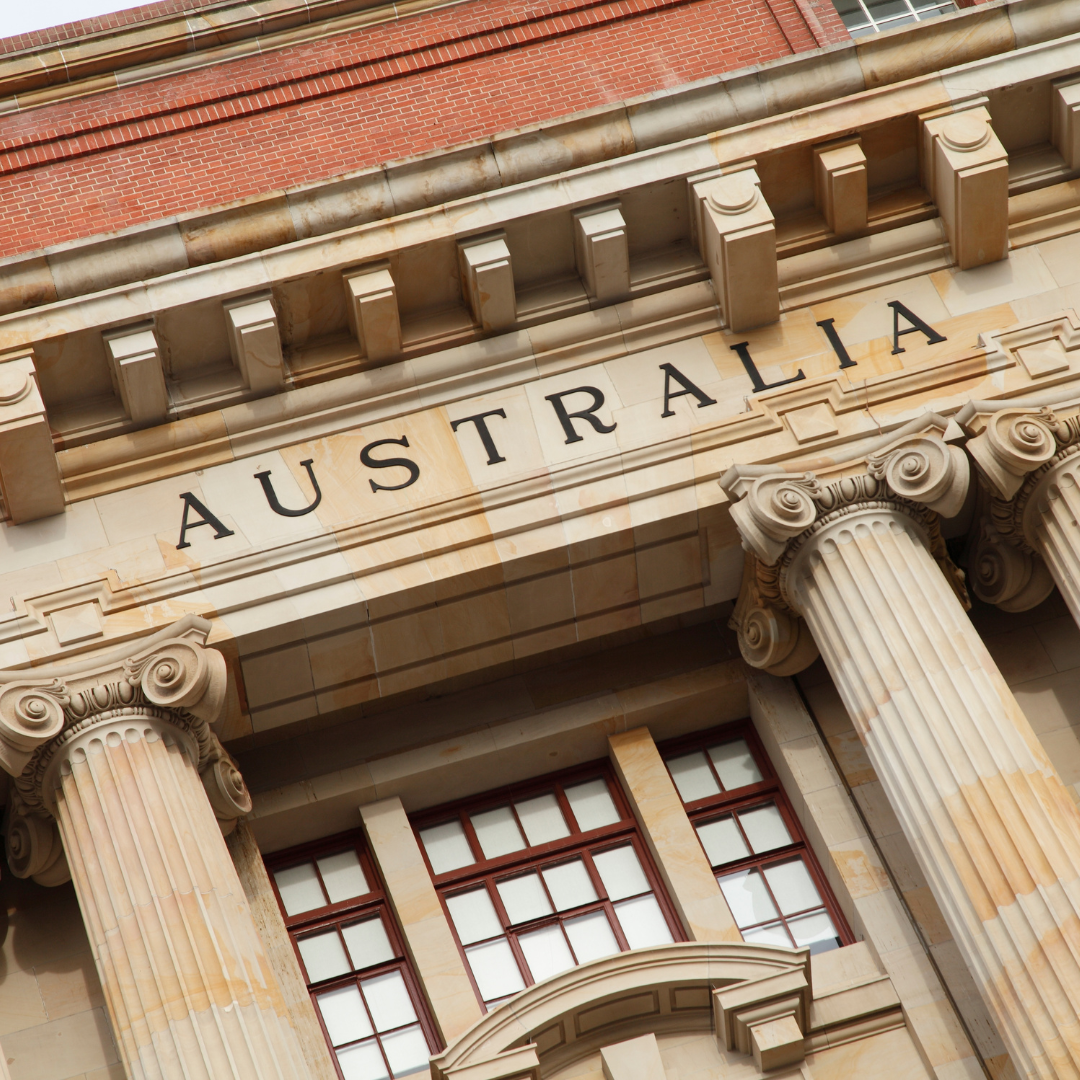Apply to travel, study, work, or immigrate to Australia. Apply for citizenship, a permanent resident visa, refugee protection, or check the status of your application. Find forms and guidelines to support your journey.
Australia is a well-regarded nation that ranks among the richest in the world. It is a developed, multicultural nation that ranks extremely high on the Human Development Index and provides its citizens with a high standard of living, economic freedom, and adequate civil and political rights protection.
Being an Australian Government-MARA Licensed Immigration specialist based in Dubai for the past 24 years, we provide our clients with the latest and most appropriate immigration strategies.
Australia is one of the most popular migration destinations in the world thanks to its friendly culture, energetic cities, and sunny beaches. Due to its excellent quality of life and secure economic prospects, Australia attracts highly competent professionals from all over the world. Australia is a straightforward place to integrate as it speaks English. Depending on your profile and immigration objectives, you can immigrate to Australia via the following programs:
In Australia, there are numerous chances for employment, both temporarily and permanently. You can live and work in Australia by obtaining a visa, which ranges from General Skilled Migration to a Working Holiday. Learn about popular work visas, employment opportunities, and application criteria.
Australia is a popular destination for international students from around the world. Home to leading universities, it offers a relaxed, affordable study experience and strong career opportunities in some of the world’s most livable cities, including Sydney and Melbourne. If you are planning to study in Australia, you will have to apply for one of the following visas.
If you are a citizen or permanent resident of Canada, you may sponsor your family members to immigrate to Canada. We take you through Canada’s immigration options designed to keep families together!
Australian immigration department, to bring family members together, has introduced family visas in Australia. This entitles partners, parents, children and other family members to migrate to this country subject to certain pre-conditions. These visas are essentially sponsored by Australian citizens, permanent residents of this country, and eligible New Zealand citizens. Find out more on the Partner visa (Subclasses 820 and 801)
Unless you are an Australian citizen, you will need a valid Australian visa to enter the country. New Zealand passport holders can apply for a visa upon arrival. All other passport holders, regardless of age, must apply for a visa before leaving home. You can apply for a range of Australian visa types, including:
Not sure which visa is the right one for you? Don’t bother. Get in touch with us, and we will be happy to assist you.
Australian immigration is possible based on skills, work experience and qualifications for tradespeople and skilled professionals. For an evaluation of your chances for immigration to Australia, get in touch with us, and we will be happy to take you through your Australian immigration options.

If you possess skills and capabilities to enhance Australia’s economy and workforce, you may be eligible to migrate to Australia by applying for an Australian Work visa. These visas are designed to encourage applicants to obtain sponsorship through an employer or secure nomination. Many foreigners live and work in Australia because of the lifestyle and employment opportunities offered.
Suppose you plan to establish a business in Australia, invest in a company or migrate to Australia as a business owner or investor. In that case, you must receive the correct immigration advice. For many, applying for a business visa may be the only option for residency in Australia. Our expert Australia immigration consultants provide guidelines and industry knowledge to ensure your visa application has the best chance of being approved. We will teach you everything you need to know about Canada’s startup visa program, including how to apply.


Choosing to study in Australia is a thrilling first step toward a promising future. You must settle a few key points before proceeding with this phase.
One of the most important things you’ll need is a student visa, specifically the Student visa (subclass 500). But what is required to submit a winning application? Find out what you need to know for a successful application to study in Australia, or contact us, and we will be happy to help you out.
The Australian Family and Spouse Visas aim to reunite immediate and extended family members with their eligible Australian relatives and spouses. To be sponsored under the Australian Family Migration stream, the close family relative or spouse must be an Australian citizen, Australian permanent resident or eligible New Zealand citizen and at least 18 years old. Several temporary and permanent family visas are available, depending on the applicant’s unique circumstances. To ensure you are a successful applicant, We walk you through the numerous alternatives and the application process.


Whether you want to visit, study, work or migrate to Australia, we have brought together the major Australian options to facilitate your move.
For your vacations, working holidays, and unpaid business visitor activities like attending conferences and meetings.
Study in Australia’s world-class universities, take training or accompany young students.Similarly, if an immigration officer decides that a person would place an undue demand on publicly financed Canadian health and social services, they may be denied admission.
Short and long-term, skilled and sponsored, business, investment and working holidays. Contact us for a detailed assessment, and let’s explore your work options for Australia.
Join your partner or family relatives who are visa holders, permanent residents, or Australia or New Zealand citizens in Australia.


In order to keep up with its reputation as one of the world’s most progressive nations, Australia has a massive demand for qualified individuals. Use this chance to your advantage by submitting an application for a work visa in Australia. Royal Migration Solutions is the go-to consulting firm for establishing a successful career in Australia, thanks to our extensive familiarity with the country’s immigration procedures.
In Australia, everyone has the right to a job and a living wage. Your money permits you to take advantage of it in a free and equal society. All states and territories in Australia are home to a diverse range of prosperous industries. You can get and keep a job with various professional and industry qualifications. Australia anticipates that everyone will contribute to and participate in Australia’s prosperity.
The labour market in Australia can be fiercely competitive. Your ability to find work in Australia depends on various factors, including the economy, your education and experience, the type of work you’re looking for, and any unique circumstances that can affect the availability of a certain type of work in a given region. If you are having trouble finding a job in your particular field, gaining valuable Australian work experience should be your top goal.
If your visa permits it, and you don’t already have a job or a source of income, you’ll need to hunt for employment. A job does not come with citizenship, permanent residency, or immigration approval.Applicants will attend a Citizenship Ceremony to take the Oath of Citizenship and become Canadian citizens once they have been authorized.
Your ability to find work depends on a variety of variables. The considerations include your intended workplace, the state of the economy, your qualifications, talents, and skill demand.
There are numerous venues where employers post job openings. Responding to job vacancy adverts is your best bet if you’re a newcomer to Australia and looking for employment. You can learn about the kind of job needed, the location, and other crucial details from the advertisement.
When you see a job opening that appeals to you, the advertisement will provide instructions on how to apply and a person’s name to get additional information. Typically, your application will need the following:
– A cover letter outlining the position you’re applying for and why, given your credentials, talents, and experience, you should be taken into consideration for it.
– A CV with your name, address, phone number(s), email address, abilities, past employment history, education, and credentials
– Copies of references from prior employment or information on how to reach them
– Copies of relevant educational and professional certifications
You can get assistance with creating job applications and interview methods through the Australian Government’s employment service program, jobactive. For additional information, visit the jobactive website.
Once you land a job, you’ll need to give your new employer the information for your bank account and tax identification number. For more details on tax and superannuation, visit the Money – managing your finances page.
Certain professions have unique prerequisites. This could entail joining a professional or trade organization and registering or receiving a licence from a government agency. Discovering how to have your qualifications recognized is made easier with the help of the Qualification Recognition website, which the Department of Education runs.
The Department of Education evaluates trade credentials using Trades Recognition Australia.
Even entry-level positions in many careers will demand some qualifications. Look through job listings for comparable positions or visit industry websites if you have a specific industry in mind. You can get a rough overview of the types of education offered and where to look for further information by visiting the website’s Education page.
Australia has regulations governing minimum pay and working conditions. All Australians will have equitable working conditions thanks to these laws. The legislation defines the types of contracts that determine the working relationship between employers and employees.
They range from individual common law contracts to collective enterprise negotiations of entire organizations. Industrial relations law creates an equitable, secure, and productive workplace for both employers and employees. Among the protected working conditions are the following:
Depending on your profession and business, these conditions can be very different. Australia’s Fair Work Advocate supervises compliance with industrial relations rules and investigates law violations to promote justice for all employees. If you or your family is concerned about your working conditions or safety, you can contact the Ombudsman for a free service. On the Fair Work Ombudsman’s website, you can find out more about them and get access to their services.
Any accusations of workplace discrimination are investigated by and resolved by the Australian Human Rights Commission. Based on sex, colour, age, handicap, trade union membership, religion, sexual preference, or political stance, discrimination can take many different forms.
Information on workers’ compensation and workplace health and safety in Australia can be found at Safe Work Australia.
Australia’s educational system is accessible to everyone. It provides a chance for people of all ages and abilities. The extensive and varied educational system offers formal training, education, and certification. Students, industry, and Australia will experience better job results thanks to a strong educational system. The educational system in Australia is three tiers, primary, secondary, and postsecondary.
Religious organizations and other organizations provide private education to promote a distinct educational philosophy or religious education. Although Jewish, Islamic, Buddhist, and alternative schools are frequently found in larger cities, Christian or independent private schools predominate. Private schools rely on tuition payments made at the beginning of the academic year.
Note: It’s possible that students on temporary visas must pay the full cost of attending public school. For information, contact each institution directly.
If you meet the entry requirements, you can enrol in any level of schooling. If you initially fall short of the admission standard, you can pursue additional study to catch up. All those who experience disadvantages have access to assistance. Higher education positions have entry requirements that students must meet to enrol. Those first fill the slots with the best chance of success. After finishing high school, some students begin their higher education. Some students begin their studies as adults much later.
Australian education is a once-in-a-lifetime opportunity. There is some kind of education or training available at every stage of life. All children benefit from an early education in developing fundamental language, numeracy, and social abilities that become specialized knowledge required for employment. Australians are urged to further their education, keep their credentials, and learn new skills.
Each state and territory is in charge of running its educational system. This indicates that they support their educational institutions financially and through regulations. To find educational institutions in your area, use the links to the state and territorial education departments provided below. They also provide further details on the various educational systems in each state and region.
Children between the ages of three and five can attend preschool. Preschool is typically offered part-time and is not required. Young children can interact with their classmates and spend some time away from their families at preschool. In most parts of Australia, there are a variety of preschool and daycare alternatives.
Most kids start primary school at age five, and it’s required for kids of citizens and permanent residents. In primary school, learning is based on eight themes. Languages other than English, Maths, Science, Society and Environment, Technology, and the Arts are among them. Also included are English, Health and Physical Education, and Science. Children start mixing with their peers in larger groups when they are in primary school, which helps them learn respect, tolerance, and teamwork. The ability to live in harmony with one another is a crucial component of primary school education.
The majority of kids go to a primary school nearby where they live. Typically, students attend class 40 weeks out of the year from 9 am to 3 pm. Most schools require students to wear a uniform, which must be pre-purchased before the child begins classes. Children either purchase food at the cafeteria or bring their own lunch and snacks to class.
Older children go to secondary school. Most kids begin secondary school not long after they turn 14. Students study fundamental courses like science, maths, and English in the first two years of secondary school. They also take additional classes called electives. Students take electives to get ready for future coursework or because they are interested in the topic. They select courses for later secondary school that will benefit their future careers. Students gain knowledge about leading healthy lives and transitioning into adulthood in a multicultural community. Secondary schools are constructed by the government in areas that serve a number of suburbs. To get to a secondary school, students might need to take public or private transportation. Typically, students attend class 40 weeks out of the year from 9 am to 3 pm. Most schools require uniform dress, and meals are provided by the students.
Australia offers a wide variety of learning possibilities for both adults looking to improve their skill set and students who are leaving school. There are various opportunities for learning and development, ranging from high-level research and thinking to practical, work-based skills. Higher education in Australia fosters innovation in the fields of thought, business, culture, and society. It is a major asset for the labour market.
People who received their education abroad might be recognized for their education as well as access educational services in Australia. This will improve career chances and make it easier to establish cultural ties through education with other nations.
Universities in every state are funded by the federal government. In terms of government, each is separate. They decide on their curricula and lesson plans. For a course to be offered, a professional organization must approve it. A university programme typically requires three or four years of study. For the purpose of financing their postsecondary education, domestic students may apply for HELP loans from the Australian Tax Office.
Universities are centres for both education and research. In all states, they can be found in both metropolitan centres and rural locations. Students from secondary schools may be admitted depending on their results at the end of year 12. Based on their likelihood of succeeding in their selected course, mature students are admitted. International students, both those paying full tuition and those receiving scholarships, are also accepted by Australian universities.
There are a wide variety of academic and professional courses offered. In Australia, several professions including veterinary medicine, engineering, and architecture call need a specific level of education from a university. The studyinaustralia.gov.au website provides detailed information about the courses offered, the locations of our universities, and how to enrol in postgraduate research programs for those who are interested in learning more about Australian universities.
Founded in 2001, Royal Migration Solutions is widely considered the most respected immigration firm in the UAE. We have earned our reputation as a world-class immigration firm by providing dedication and personalized service to every unique case before us.